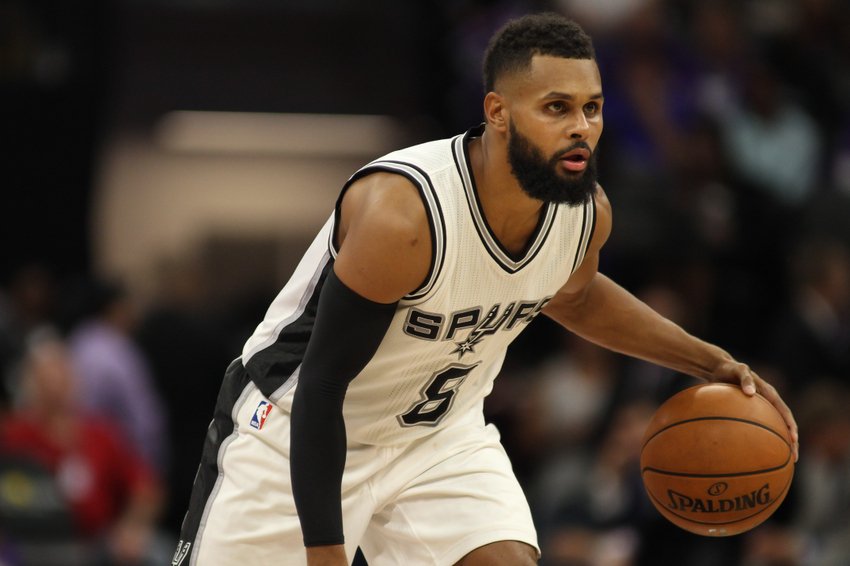Patty Mills is quietly having a great start to the season. Due to a knee injury, Tony Parker has already missed four of the 11 games the San Antonio Spurs have played, which has meant increased minutes and workload for Mills. Luckily for the Spurs, Mills has responded to the larger role well.
Many fans will remember his play during the 2013-2014 championship season. He was a threat from outside the arc, shooting 42.5% from 3-point range and he fit in incredibly well with the rest of the second unit, giving the Spurs one of the most formidable bench units in the league. Unfortunately, shortly after the Spurs won the championship that season, Mills received surgery on his shoulder and missed a significant amount of time in the following season. When Mills did return, he struggled to find his stroke, shooting a career-low 34.1% from 3. While last season saw Mills closer to his pre-injury performance, through 11 games this season, he seems to have returned fully to pre-injury form.
Mills is a catch-and-shoot threat. The NBA stats page classifies over 47% of his shots as catch-and-shoot, and of those that are 3 pointers, he hits 47.4% of them. This means that Mills is a great off-ball player, and opponents have to respect his shot, keeping them from helping too far off him on defense. He is especially accurate when shooting from the right corner, where he makes 50% of the threes he shoots. However, 72% of Mills’ 3-point shots come from the top of the key, where he shoots a still respectable 40.5%. Not only can he hit shots from the outside, but he has been potent in preventing opponents from doing the same.
In possessions where Mills is the primary defender of the player taking a three point shot, he is limiting opponents to only 20% shooting. On average, opponents are making 15.5% less 3-point shots when defended by Mills than they usually make. Mills’ defensive limitations exist mainly in 2 point territory, where opponents shoot 59.2% on shots when defended by him.
Mills has also developed on-court chemistry with most of the team’s big men. Over 51% of all passes he receives are from Pau Gasol, LaMarcus Aldridge, or David Lee. Receiving 24.5 passes from this group per game, Mills is converting those passes into 1.6 made field goals. While this number may seem small, especially for a spot-up shooter, it is reasonable to believe that many of these passes are to reset the offense if the ball made it to one of the big men, but the play got broken or the big man with the ball couldn’t find an apparent opening.
On the other hand, no teammate sets up Mills for three better than Kawhi Leonard. About 30% of all three-point shots Mills has hit this season follow a pass from Leonard. The benefit is mutual. Leonard receives the ball a team-high 19.8% of the time from Mills. Leonard makes 55.6% of the three point shots he takes after receiving a pass from Mills, a high mark for an already effective outside shooter.
Mills provides the Spurs some much needed flexibility. Parker is 34-years-old and has already been sidelined several times due to injury. While the Spurs are at their best when running their typical rotation, the Spurs are less concerned about giving Parker rest when Mills is playing the way he has so far this season.
On top of that, Mills still fits in great with the bench lineup. Having Ginobili on the court as a playmaker allows Mills to either run the offense or play off-ball, which works into his catch and shooting strength. His return to pre-injury form makes the Spurs that much stronger, especially at point guard, which is a position that looked like it may be thin for the Spurs coming into the season. With the spacing and offense that his shooting provides, Mills looks to continue this level of play throughout the season, bringing the same firepower and energy he provided in the team’s last championship run.
Statistics used via NBA.com/stats.
Add The Sports Daily to your Google News Feed!
